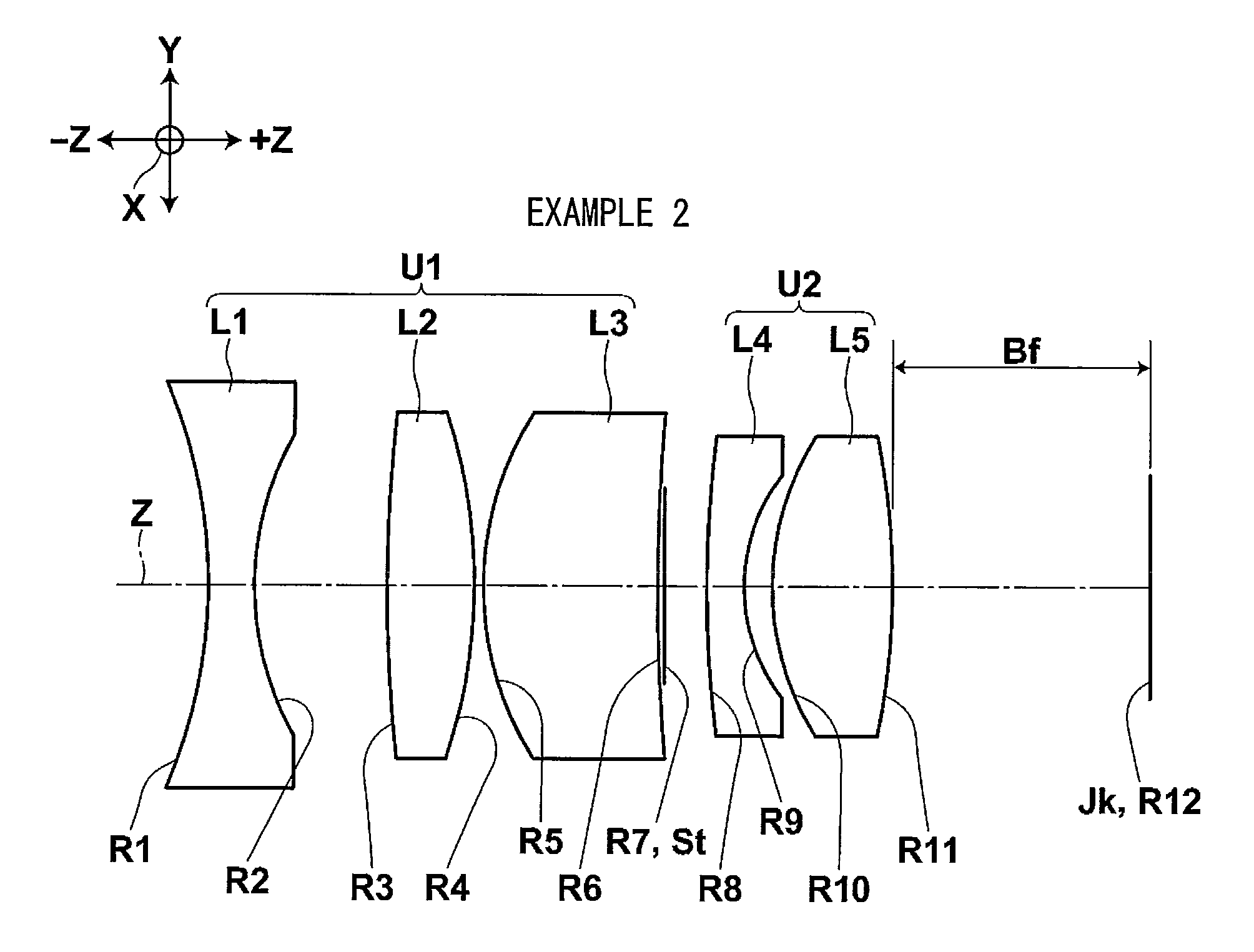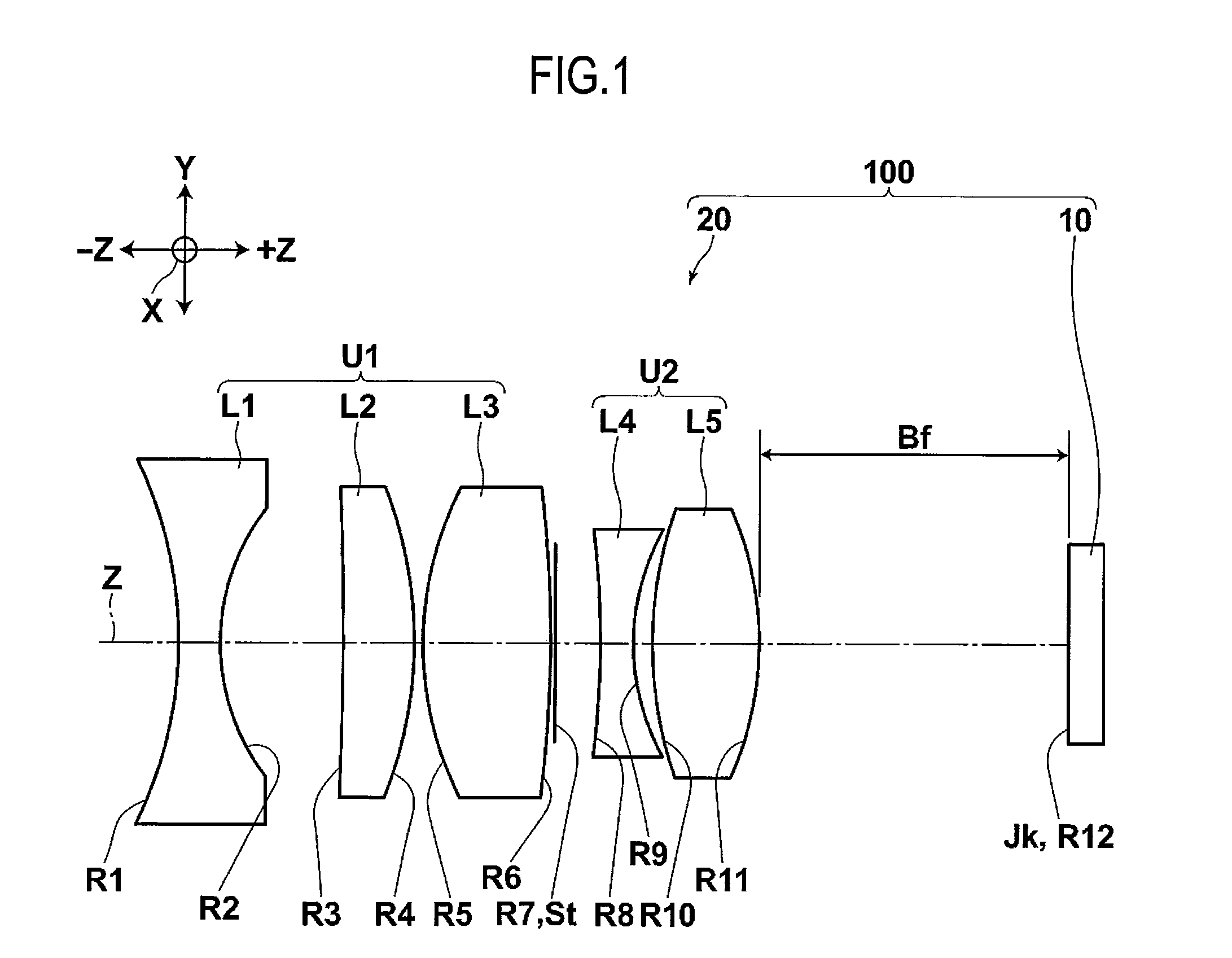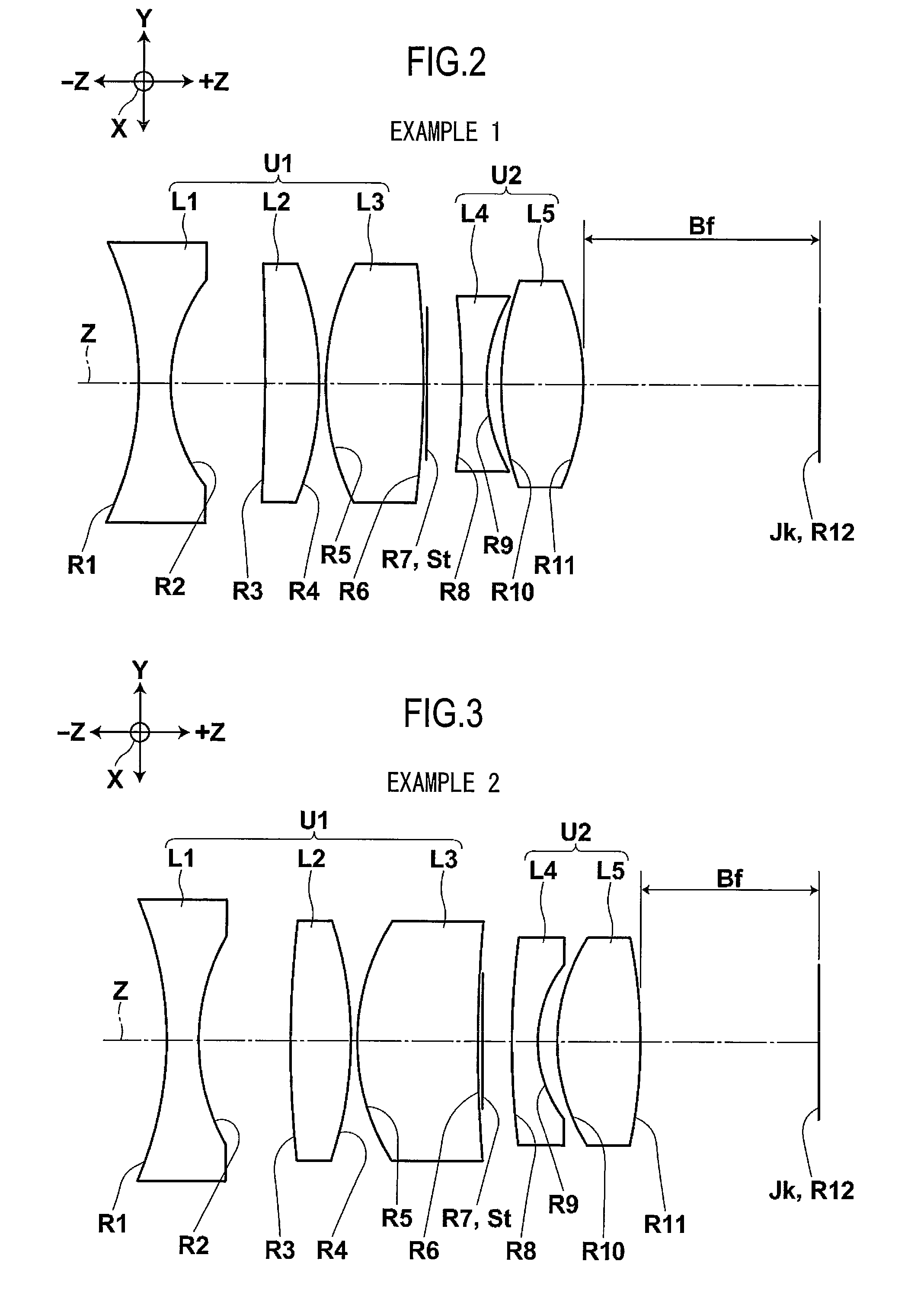Imaging lens and imaging apparatus using imaging lens
a technology which is applied in the field of imaging lens and imaging apparatus using imaging lens, can solve the problems of reducing resolution, deteriorating optical performance of imaging lens, and achieves the effects of lowering the optical performance of imaging lens, high environmental resistance, and high environmental resistan
- Summary
- Abstract
- Description
- Claims
- Application Information
AI Technical Summary
Benefits of technology
Problems solved by technology
Method used
Image
Examples
Embodiment Construction
[0049]Hereinafter, an imaging lens and an imaging apparatus using the imaging lens according to exemplary embodiments of the invention will be described in detail with reference to the accompanying drawings.
[0050]FIG. 1 is a cross-sectional view schematically illustrating the structure of an imaging apparatus using an imaging lens according to an embodiment of the invention.
[0051]An imaging lens 20 shown in FIG. 1 is mainly used for an in-vehicle imaging apparatus that captures a situation on the front side of a vehicle, and focuses the image of an object on a light receiving surface Jk of an imaging device 10, such as a CCD or a CMOS. The imaging device 10 converts an optical image formed by the imaging lens 20 into an electric signal to obtain an image signal indicating the optical image.
[0052]The imaging lens 20 has an F number of 2.0 to 4.0 and a total angle of view of about 40° to 60°. The imaging lens 20 has a small size and a long back focal length and effectively corrects al...
PUM
 Login to View More
Login to View More Abstract
Description
Claims
Application Information
 Login to View More
Login to View More - R&D
- Intellectual Property
- Life Sciences
- Materials
- Tech Scout
- Unparalleled Data Quality
- Higher Quality Content
- 60% Fewer Hallucinations
Browse by: Latest US Patents, China's latest patents, Technical Efficacy Thesaurus, Application Domain, Technology Topic, Popular Technical Reports.
© 2025 PatSnap. All rights reserved.Legal|Privacy policy|Modern Slavery Act Transparency Statement|Sitemap|About US| Contact US: help@patsnap.com



